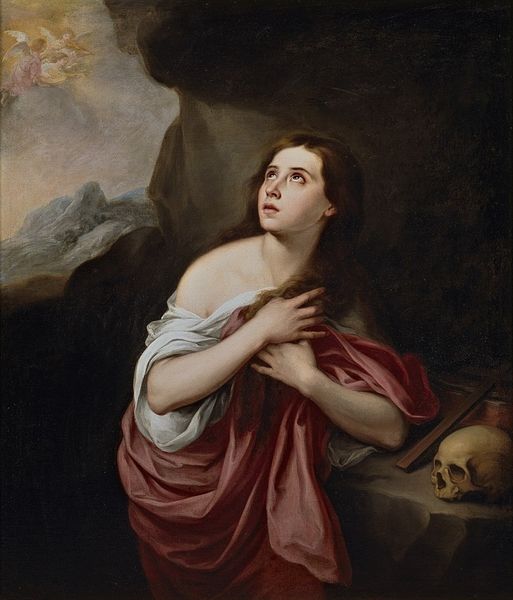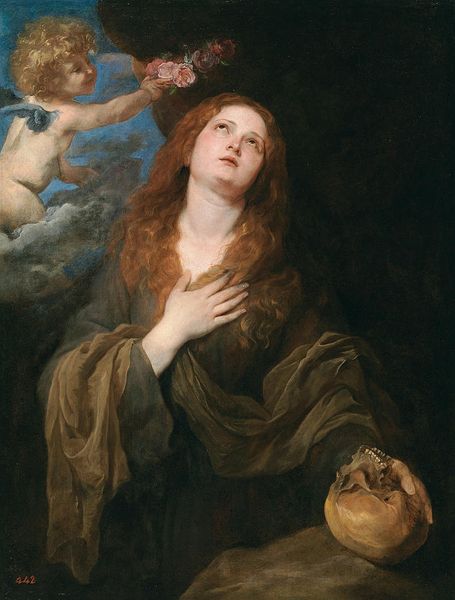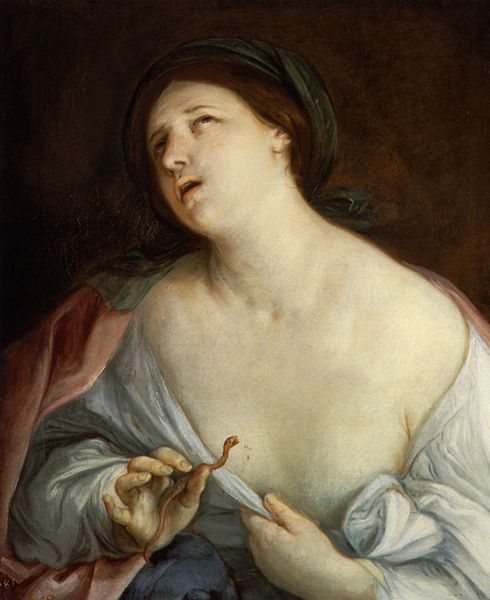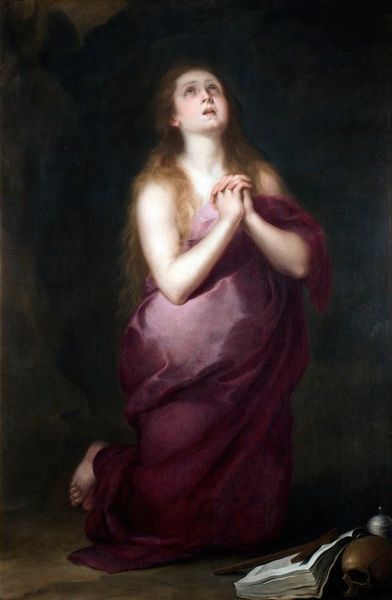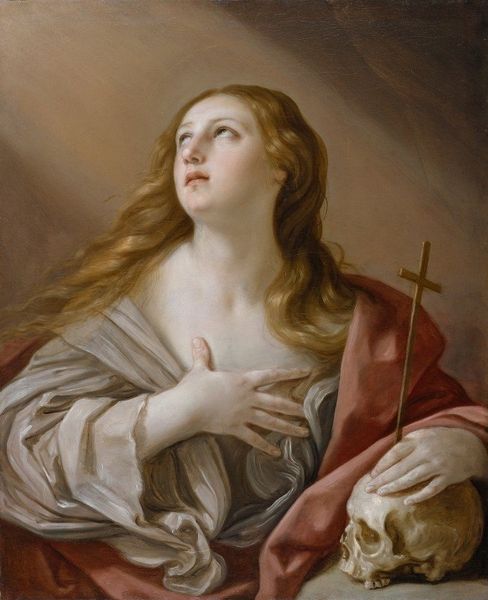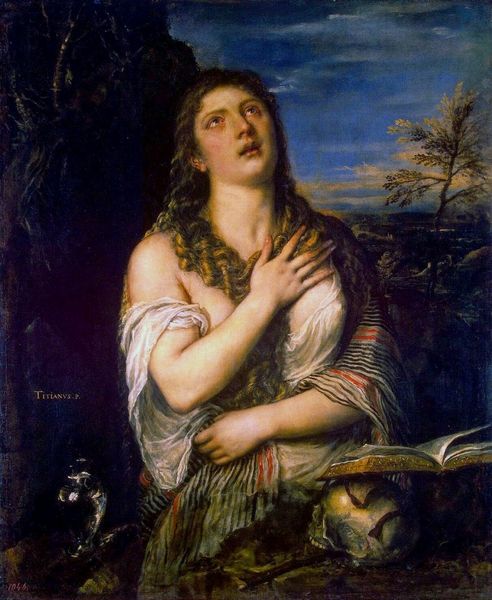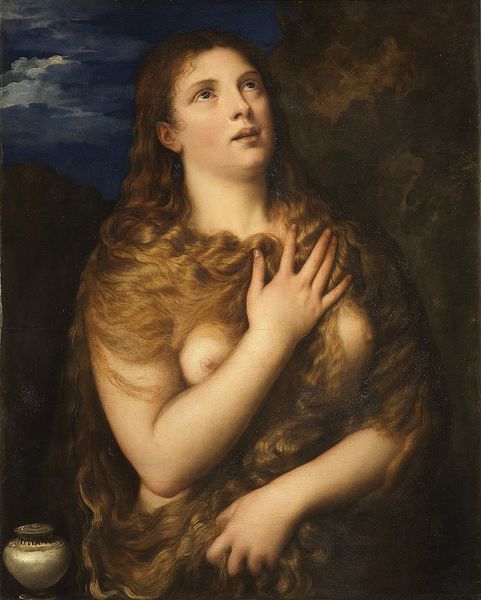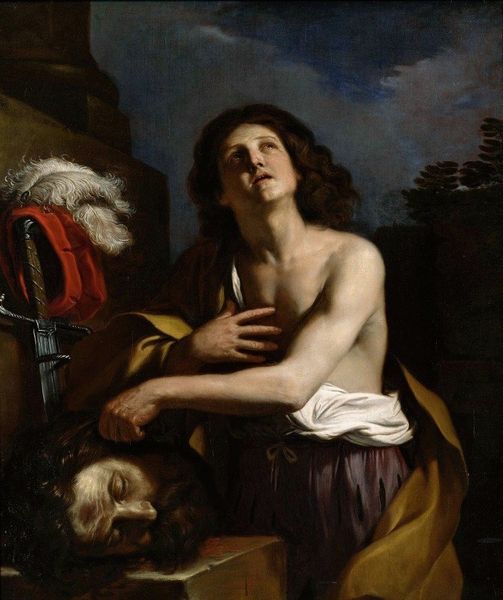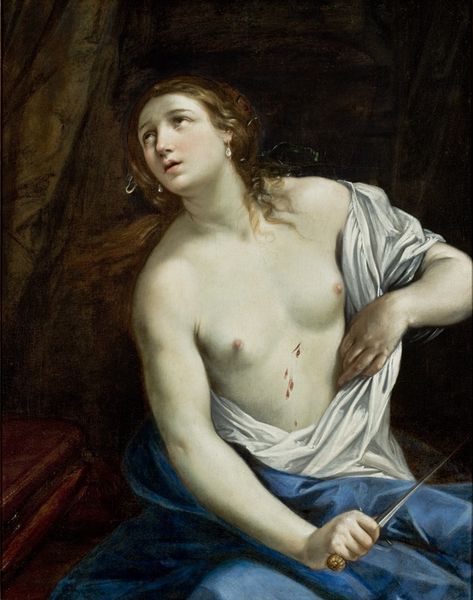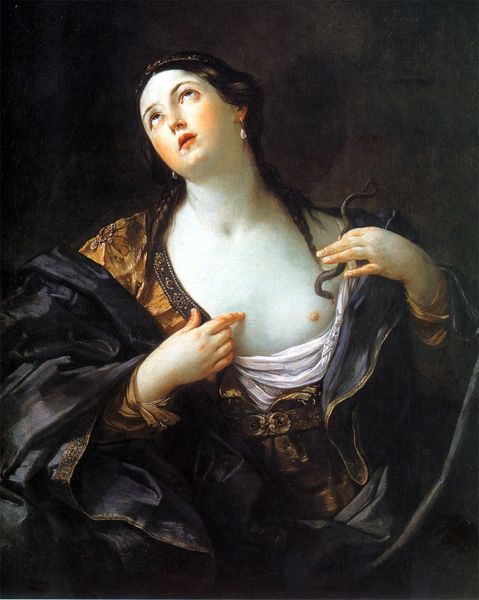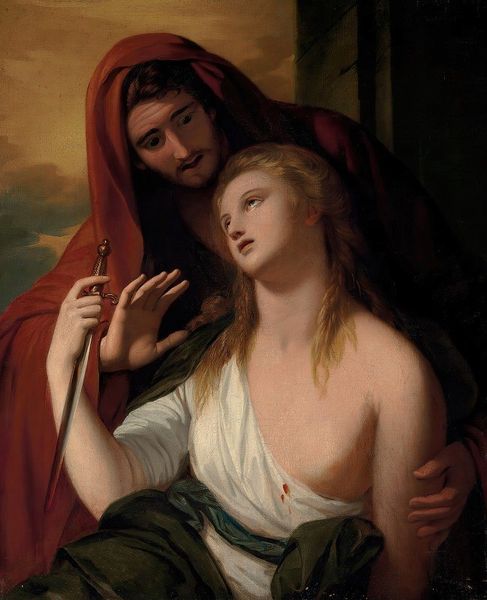
painting, oil-paint
#
allegory
#
baroque
#
painting
#
oil-paint
#
vanitas
#
chiaroscuro
#
history-painting
Copyright: Public Domain: Artvee
Curator: Let's turn our attention to "Penitent Magdalene," an oil painting created by Bartolomé Esteban Murillo around 1650 to 1665. What strikes you initially? Editor: It's bathed in a melancholic glow, wouldn't you say? The stark contrast between the shadowed cavern and Magdalene's illuminated face really grabs your attention. And that skull... a classic vanitas symbol. Curator: Absolutely. Murillo masterfully employs chiaroscuro here, a technique popularized during the Baroque period. Consider the expense of pigment like ultramarine, ground from lapis lazuli, for the sky—its cost reflecting a society fixated on wealth and luxury even while promoting religious virtue. Editor: Indeed. But that sky also symbolizes hope, repentance. The gaze upward, the gesture of her hands…she’s clearly imploring divine intervention. Magdalene represents both earthly beauty and spiritual yearning. Curator: The skull is intriguing when examined materially, isn’t it? Who acquired it? How was it treated before ending up as a prop for this meditation on mortality? The artist also seems very interested in texture and drape of the cloth. Editor: I agree. She’s traditionally portrayed with long flowing hair and fine clothes which are signifiers of sensuality and also reflect narratives around penance in paintings and sculpture of the era. But her dishevelled appearance and raw emotion adds so much emotion, humanizes the saint to appeal the viewers, and make it a relatable depiction of faith and human frailty. Curator: Considering this was likely produced for a private patron of significant wealth, its raw emotion perhaps underscores that even the affluent grapple with the transience of life. And let's think about the workshop practices; how many assistants were involved in grinding pigments, preparing the canvas, layering glazes to achieve this luminous effect? The making of this work involves collective effort, beyond just the attributed "Murillo." Editor: Fascinating perspective. So you're pointing out the tension between this individual figure's spiritual journey and the very worldly circumstances of the artwork's creation, how it also speaks to society as a whole. Curator: Exactly. It bridges earthly creation and spiritual depiction. I wonder who provided the actual cloth? Is this some family cloth recycled or traded? Editor: That provides quite a different viewpoint to this Magdalene that will change the way visitors approach it from here. Curator: A good image indeed to stimulate the eye and mind!
Comments
No comments
Be the first to comment and join the conversation on the ultimate creative platform.
